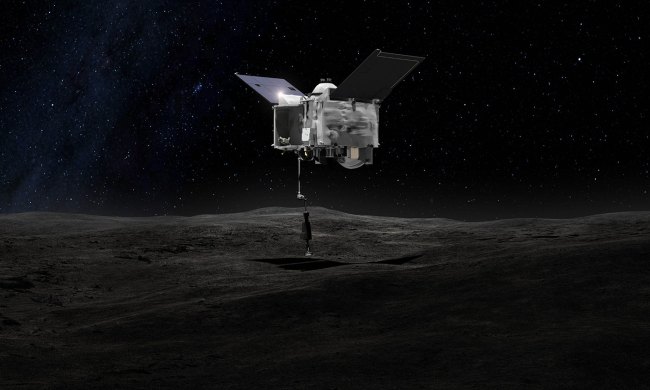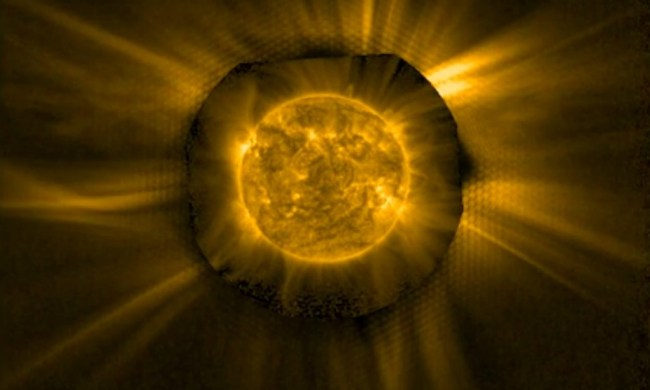
Perseverance rover catches footage of a dust devil on Mars
Many weather events we experience on Earth can be found on other planets too, including whirlwinds, and the Perseverance rover recently captured footage of one.

Hubble snaps an autumnal nebula glowing orange from young, hot stars
A new image from the Hubble Space Telescope shows a nebula in the gorgeous colors of autumn, just in time for leaf-changing season.

Dark matter hunting telescope Euclid has a problem with its guidance system
The Euclid space telescope, launched in July this year to investigate the mysteries of dark matter and dark energy, has run into issues during commissioning.

Hubble investigates the gorgeous remnants of a supernova
Scientists are using data from Hubble data of the famous Cygnus Loop supernova remnant to study how these remnants change over time.

NASA’s record-breaking astronaut arrives home safely
Frank Rubio has landed safely back on Earth after becoming the first NASA astronaut to spend a full year in space – six months longer than the original plan.

Chocolate mousse in space is more important than you think
An astronaut aboard the ISS has just used a purpose-built machine to make chocolate mousse, a creation that could prove vital for future space voyages.

Watch NASA’s capsule with asteroid samples hurtling to Earth
Watch the key moments from NASA's first-ever sample return mission, from spotting the capsule streaking across the sky to its arrival in a clean room.

OSIRIS-REx mission returns asteroid sample to Earth in NASA first
The OSIRIS-REx mission released its capsule containing a sample taken from the asteroid Bennu early this morning, and it landed in the Utah desert.

How to watch record-setting NASA astronaut return to Earth this week
This Wednesday, record-breaking NASA astronaut Frank Rubio will return to Earth from the International Space Station. Here's how to watch.

Here’s the first image of OSIRIS-REx as it approaches Earth with asteroid sample
This weekend will see the landing of NASA's first asteroid sample return mission, OSIRIS-REx, and telescopes on the ground have been able to track it.

James Webb spots carbon dioxide on Europa, supporting theory of habitability
Europa is one of the most likely places in the solar system to support life beyond Earth, and now new findings could make that possibility more likely.

NASA’s Frank Rubio has just done something very unusual in space
NASA astronaut Frank Rubio marked one whole year in orbit on Thursday, with his record-breaking stay scheduled to last 371 days.

NASA’s Artemis moon astronauts suit up for mission practice run
The four Artemis II astronauts who will embark on a flyby of the moon next year successfully conducted a pre-launch practice run on Wednesday.

Here’s where NASA will land astronauts on the moon
A new image of the moon's far side shows the region selected for the landing of NASA's Artemis III mission, which aims to return humans to the lunar surface.

New James Webb data shows that the crisis in cosmology persists
In the last few decades, one big question has created a crisis in the field of cosmology: How fast is the universe expanding?

Five new images from Chandra reveal cosmic objects in X-ray wavelength
A series of five new images from NASA's Chandra X-ray Observatory show the beauty of space as seen in the X-ray wavelength.

James Webb captures the stunning outflows from an infant star
A gorgeous new image from the James Webb Space Telescope shows a dramatic sight created by the outbursts of energy coming from a very young star.

Solar Orbiter and Parker Solar Probe work together on a puzzle about our sun
The sun's corona, or its outer atmosphere, is hundreds of times hotter than its surface, and it's still not clear exactly what that should be the case.

James Webb sees evidence of an ocean-covered ‘Hycean’ exoplanet
James Webb has once again peered into the atmosphere of an exoplanet, and this time it has identified indications that the planet could be covered in ocean.

How to watch three astronauts launch to the ISS on Friday
On Friday, September 15, a crew of three astronauts will be launching on a Russian Soyuz rocket headed for the International Space Station. Here's how to watch.

NASA astronaut describes record-breaking space stay as an ‘incredible challenge’
NASA astronaut Frank Rubio has been chatting about how he coped with spending six months longer than expected in orbit, breaking a record in the process.

NASA’s Frank Rubio just set a space record aboard the ISS
ISS inhabitant Frank Rubio has set a record for the longest time in orbit by a NASA astronaut, but that wasn't the plan when he arrived there nearly a year ago.

Swift Observatory spots a black hole snacking on a nearby star
The Swift Observatory caught a new phenomenon: a black hole snacking on a star -- not totally destroying it, but pulling off material and nibbling away at it.

Scientists ‘hack’ Solar Orbiter’s camera to get a better look at the sun
The instrument team for the Solar Orbiter's ultraviolet camera have found a new way to make use of the instrument to help it peer into the sun's atmosphere.

India’s Chandrayaan 3 lander may have detected its first moonquake
India's Chandrayaan 3 only recently made its historic lunar landing, but it is already collecting intriguing new data about the moon.

See the sparkling Terzan 12 globular cluster in new Hubble image
A new image from the Hubble Space Telescope shows a stunning field of thousands of stars, part of a globular star cluster called Terzan 12.

Perseverance rover’s Mars oxygen machine comes to the end of its mission
MOXIE is a small box inside the rover which takes in carbon dioxide and converts it into oxygen. After 16 successful runs, the experiment has been concluded.

SpaceX Starship grounded by FAA until 63 fixes are made
The FAA has completed its investigation in the explosive test flight of the Starship in April and made a list of 63 corrective steps required before it can fly.

This team of legged robots could be the future of Mars exploration
We've sent wheeled rovers and even helicopters to Mars, but to explore its hidden depths, it will take robotic legwork.

NASA’s skywatching tips for September include rare glimpse of ‘zodiacal light’
There's plenty to catch in the skies this month, including three planets, a Harvest Moon, and, if you're lucky, a zodiacal light.

How to watch the Crew-6 astronauts return to Earth this weekend
Following a six month stay in space, four astronauts are readying to return home from the International Space Station this Sunday. Here's how to watch.

James Webb telescope captures stunning view of a famous supernova remnant
The James Webb Space Telescope has provided one of the most detailed views yet of the stunning supernova remnant SN 1987A, created from a destructive explosion.

James Webb captures the magnificent Whirlpool Galaxy in two wavelengths
A new image from the James Webb Space Telescope shows the Whirlpool Galaxy, a galaxy so picturesque it is designated a grand-design spiral galaxy.

Tonight is your chance to observe a rare blue supermoon
Just in time for the end of summer in the Northern Hemisphere, tonight will see a rare astronomical phenomenon called a blue supermoon.